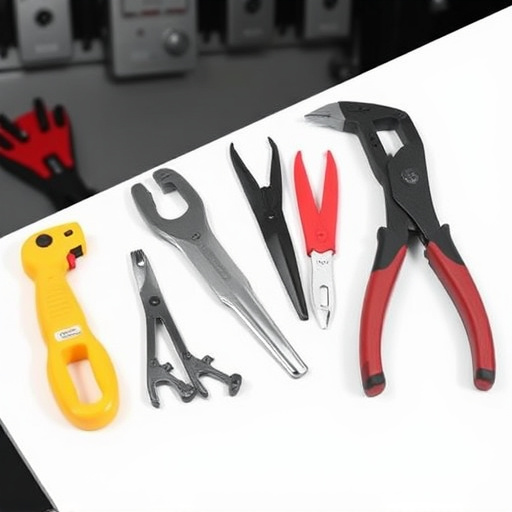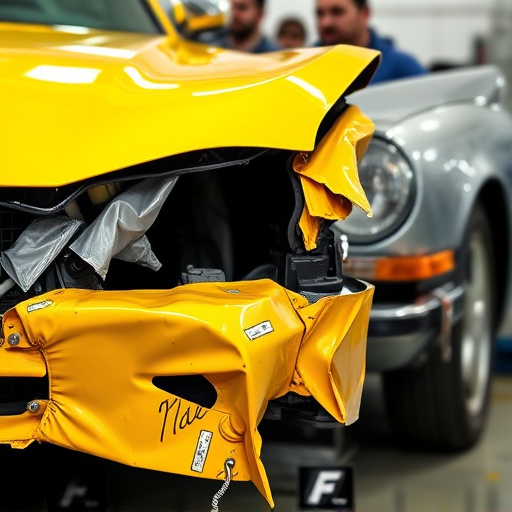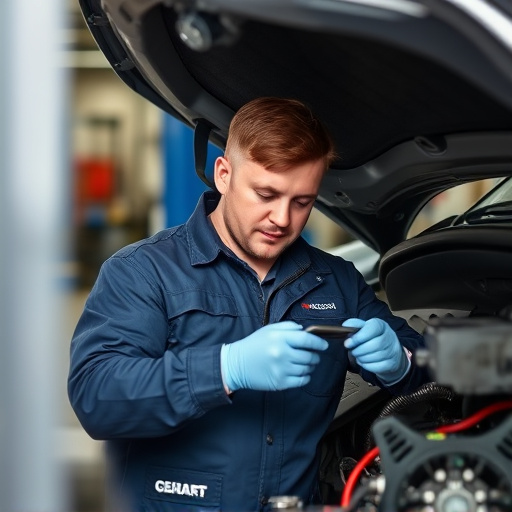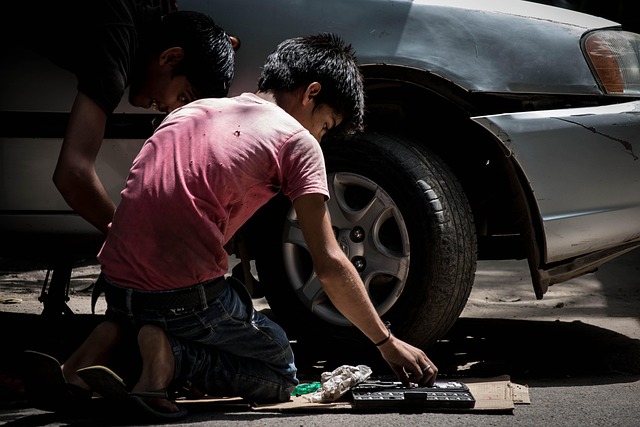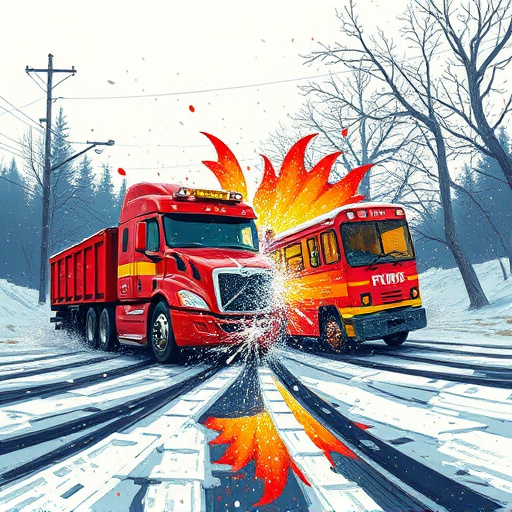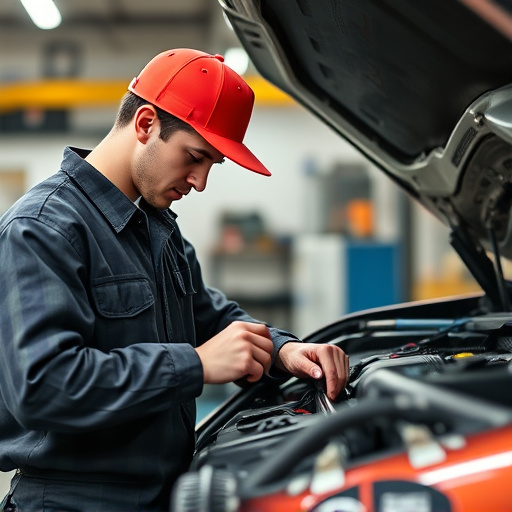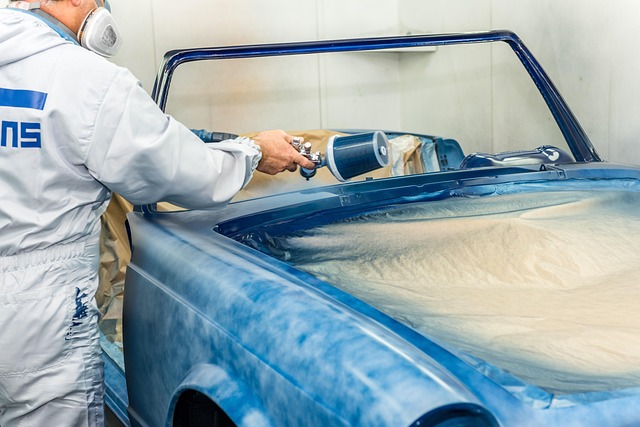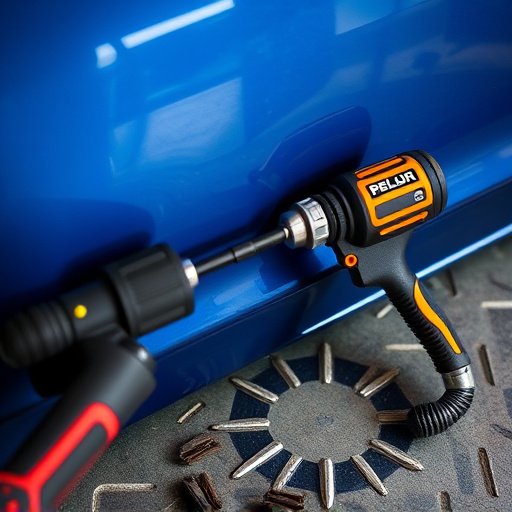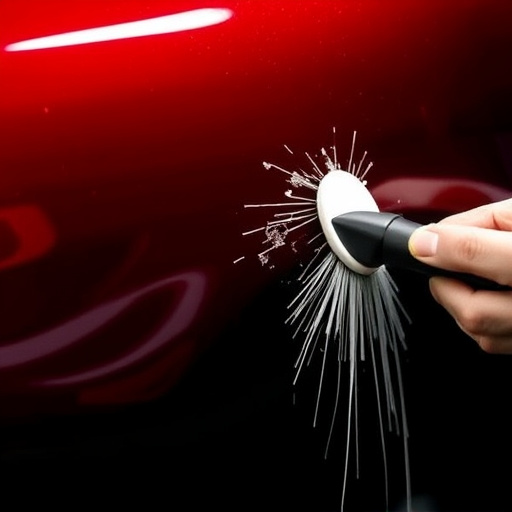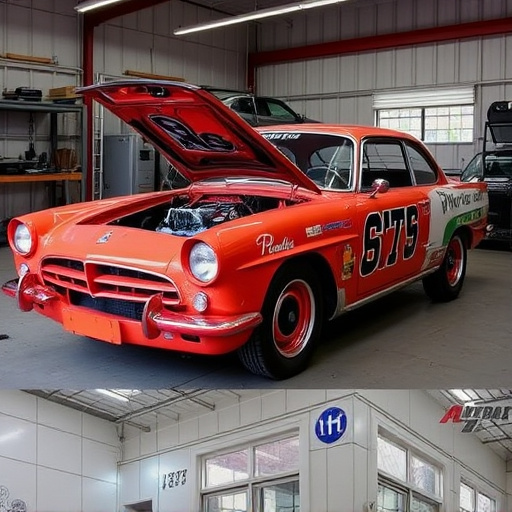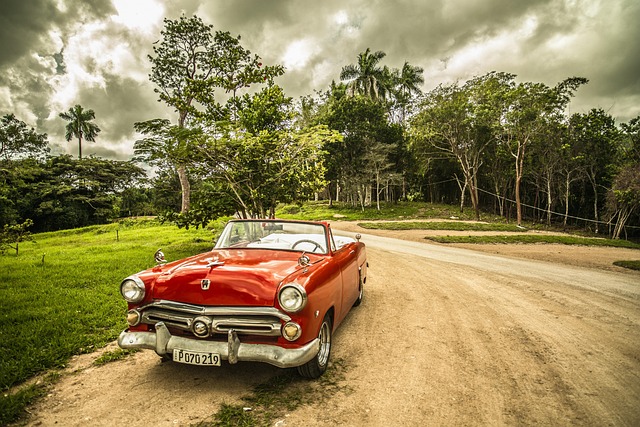Preserving historical accuracy in car restoration through original paint matching is crucial for vehicles with significant historical or cultural value. Skilled technicians use advanced paint analysis and historical research to accurately reproduce factory finishes, enhancing visual appeal and ensuring authenticity. This meticulous process involves precise inspection, custom color mixing, and modern technologies to recreate exact shades, protecting the vehicle's structural integrity and retaining its market value over time.
Original paint matching is a critical aspect of restoration projects, ensuring historical accuracy and enhancing longevity. In this article, we explore why preserving an exact match to the original paint is essential for authentic and valuable restorations. From maintaining historical integrity to increasing property value, achieving precise paint matching goes beyond aesthetics. We’ll delve into the techniques used by professionals to achieve these perfect matches, highlighting the numerous benefits that make original paint matching a true game-changer in restoration work.
- The Importance of Preserving Historical Accuracy
- Techniques for Achieving Exact Paint Matching
- Benefits Beyond Aesthetics: Longevity and Value Retention
The Importance of Preserving Historical Accuracy
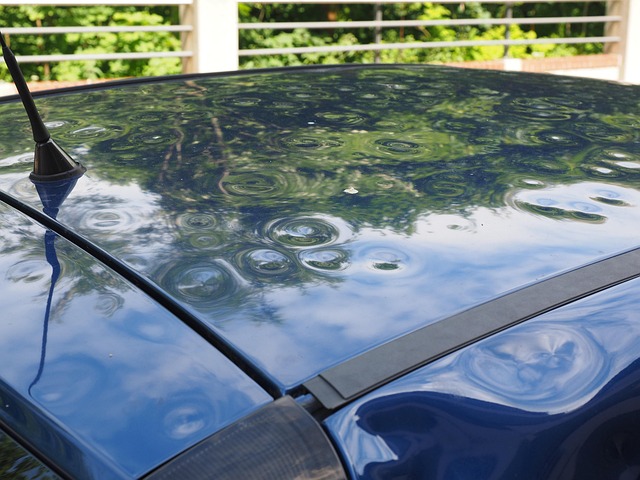
Preserving historical accuracy is a cornerstone of any restoration project, be it a historic building or an antique vehicle. In the context of car body repair and paint restoration, achieving this accuracy means meticulously matching the original paint. This involves not just replicating the color but also understanding the subtle nuances in finish, texture, and even the age-related changes that have occurred over time. Using modern techniques like advanced paint analysis and historical research, restorers can accurately match the original paint, ensuring that the restored vehicle looks as it did when it left the factory.
Original paint matching is particularly critical for vehicles with significant historical value or those that are part of cultural heritage. In these cases, every detail must be preserved to maintain the authenticity and integrity of the artifact. This meticulous process not only enhances the visual appeal but also serves as a testament to the skill and dedication of the restorer. Moreover, it ensures that future generations can appreciate the historical significance of the vehicle, making car dent repair and vehicle paint repair more than just technical tasks—they become acts of cultural preservation.
Techniques for Achieving Exact Paint Matching
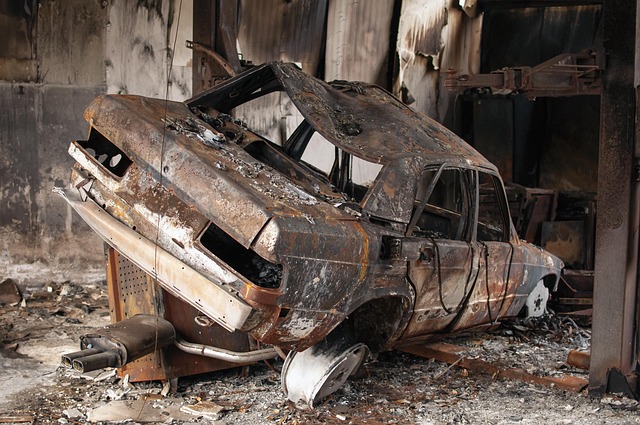
Achieving exact original paint matching during restorations is a meticulous art, requiring skilled technicians and advanced techniques. The process begins with careful inspection and analysis of the existing paint to identify its unique color formula. This involves using specialized tools to scan and match the hue, tone, and sheen of the damaged area, ensuring an accurate representation of the original paint.
Once the formula is determined, professionals employ various methods for car paint repair. These techniques include mixing custom colors in a controlled environment, utilizing advanced paint analysis software, or even reverse-engineering the paint by studying its molecular composition. In an automotive body shop, experts blend pigments and additives to recreate the exact shade, ensuring seamless integration upon application. This level of precision is crucial when addressing minor dents or extensive damage, where a successful repair means the restored vehicle looks as good as new.
Benefits Beyond Aesthetics: Longevity and Value Retention
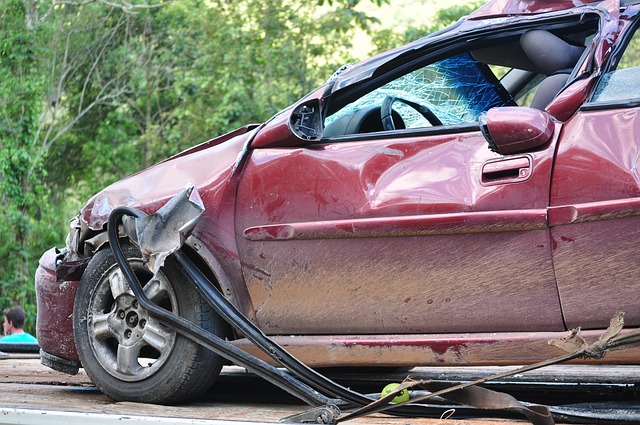
Beyond enhancing the visual appeal, original paint matching plays a pivotal role in ensuring the longevity and value retention of restored vehicles. When precise original paint matching techniques are employed during auto bodywork, auto frame repair, or fender repair, it contributes to the overall structural integrity of the vehicle. The paint not only seals and protects the underlying metal from corrosion but also fills in microscopic gaps and imperfections, preventing water penetration and rust build-up.
This meticulous process preserves the vehicle’s original condition, ensuring that it retains its aesthetic appeal and market value over time. By closely matching the original paint, restorers can create a seamless blend that is virtually indistinguishable from the factory finish. This level of craftsmanship not only satisfies the owner’s desire for perfection but also ensures that the vehicle stands the test of time, maintaining its beauty and resale value for years to come.
Original paint matching is not just about aesthetics; it’s a critical component of successful restoration that preserves historical accuracy, enhances longevity, and retains value. By carefully employing techniques like color analysis, material studies, and meticulous recreation, restorers ensure that restored structures or artifacts reflect their original splendor. This attention to detail not only honors the past but also ensures that future generations can appreciate these cultural treasures, making original paint matching an indispensable practice in the field of restoration.
